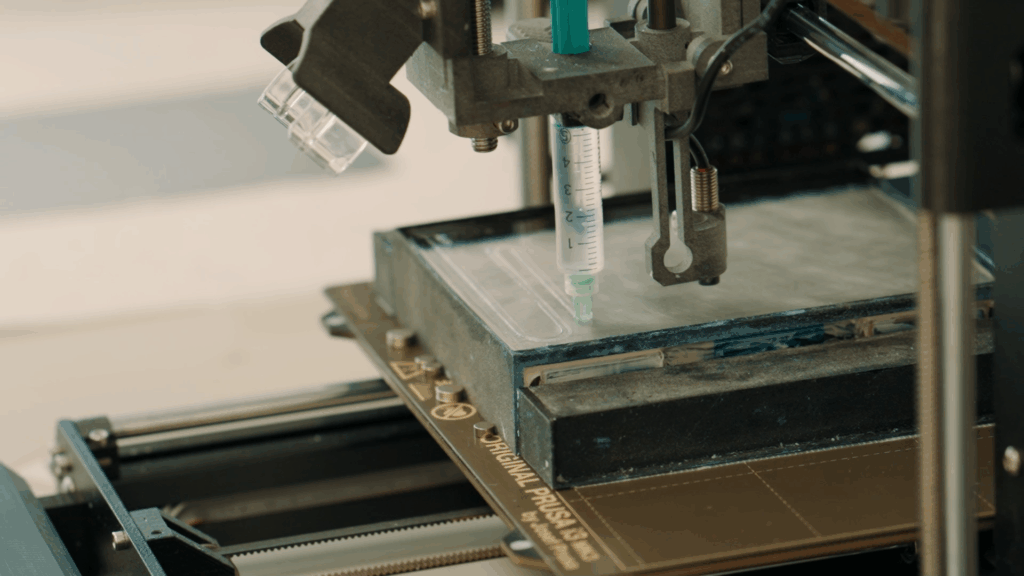Lisa-Lou Gracia, CEA project manager, considers how Versaprint uses smart printing technology to build next-generation battery systems for all transport modes.
In a fast-evolving world of electric drives, batteries are often designed in narrow use cases, limiting adaptability and slowing innovation across sectors. Versaprint, a European collaborative research project, will challenge the status quo with bold proposals. What happens when the battery system is modules, multifunctional and sustainable from the start? With this vision, Versaprint is building a new generation of battery systems tailored to performance as well as sector integration and scalable manufacturing potential. From aviation to automobiles, rail and waterborne transport, Versaprint’s flexible architecture and eco-design principles aim to make batteries smarter, safer and more prepared for the future.

While much of the battery conversation focuses on energy density and cost, Versaprint uses additive manufacturing techniques such as 3D printing to add a new layer of innovation that integrates smart, lightweight, and recyclable components. Its mission is clear. Designing safer, more sustainable, adaptable battery systems allows the European industry to lead the global battery race.
Modular technology for multi-faceted markets
Today’s battery packs are often all in one size designed for bulk manufacturing. However, mobility needs are not uniform. Battery modules for city EVs share little with battery systems for marine ships or light aircraft. Versaprint tackles this challenge with a modular architecture built from Smart Building Blocks (BBS), each dealing with key features such as thermal management, interconnection, sensing, and structural protection.
These BBSs are designed to be mixed and match components. Adjustable to your specific format, chemistry, voltage, and applications. This flexibility provides real value to the industry. Reduces development time, ease of customization, and better alignment with use case requirements.
Versaprint’s modularity means better scalability across the industry. With aviation and automotive applications already being prototyped, simulations are expanding their benefits to rail, waterborne, and off-road applications. This wide applicability increases the relevance of project outcomes and market coverage.
Why additives are manufactured?
Additive Manufacturing – 3D Printing – is central to Versaprint’s strategy. But it is not used for novelty. Allows features that traditional methods struggle to achieve.
“Using advanced 3D printing, we embed features and values directly into the battery system,” explains Lisa-Lou Gracia. “3D printing allows for reduced parts count through inserting flame retardants, integrating complex internal structures for thermal management, and multifunctionalization.”
For example, 3D printed silicon-based microchannels (BB1) for cooling systems significantly reduces weight compared to traditional metal counterparts. This solution doesn’t just cool the cells. Increases energy and power density by maintaining optimal temperatures during charging and discharging.
Still, the project remains grounded. For example, 3D printed casings are intended not as the final manufacturing solution, but as a testbed to integrate functionality and improve recyclability.
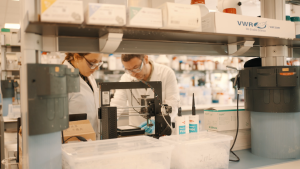
Smarter battery sizing with simulation
One of Versaprint’s outstanding contributions is the decision tool, a simulation engine built into Matlab Simulink. This tool allows engineers to design the optimal battery module based on specific constraints such as pack voltage, capacity, and cell type. Even the factors of cellular aging allow for more accurate estimates of life span.
This is what it does:
We propose optimal cytochemistry based on targeted applications, available space, and thermal profiles. We recommend the best combination of Versaprint BBS for specific applications to balance performance, weight, cost, sustainability and safety. It provides rapid iteration and sensitivity analysis to optimize both technical performance and environmental footprint.
This decision backbone not only accelerates design time, but also reduces risk. By simulating pre-manufacturing results, businesses can avoid costly failures and develop tailor fit solutions with confidence.
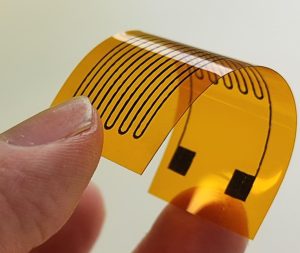
Sustainability as a design principle
Unlike other battery projects that add a sustainability assessment at the end, Versaprint integrates eco-design from the start. As a result, not only greener batteries, but smarter product development is possible.
It uses bio-based water-soluble inks used in printing sensors (BB2). These sensors reduce environmental harm by avoiding toxic solvents and materials. It is also printed on foils rather than directly on cells, simplifying integration and reducing production waste.
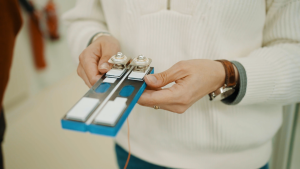
Add to Versaprint busbars (BB3 and BB4) designed for fast manual disassembly and second life reuse. One design reduces the module disassembly time from more than 2 hours to just 13 minutes. This is a potential game changer in recycling economics. The disassembly cost will decrease from 3.99 euros/kWh to just 0.36 euros/kWh.
Beyond materials, the project evaluates the environmental footprint throughout the lifecycle of each building block, with the final system-level analysis at the next stage.
Improved safety and lifespan
Safety is the basis of Versaprint’s value proposition. All BBSs play a role in preventing or mitigating thermal runaway (TR), the primary failure mode of lithium-ion batteries.
Cooling System (BB1): Prevents overheating during high-speed charge/discharge cycles, maintains optimal cell temperature and extends cell life. 3D Print Temperature and Hydrogen Sensor (BB2): Monitors early warning signs of TR and enables faster responses. Busbars (BB3/BB4): Integrates electricity, heat and safety features while easy to dismantle for maintenance and end-of-life treatment. Gas and Particulate Filters (BB7): Cool the exhaust gas during TR, trapping solid releases, reducing the risk of fire propagation to adjacent cells.
Recent lab findings show that Versaprint’s cooling system (BB1) maintains a 3C charge/discharge while maintaining cell temperature below 55°C, a significant safety margin. Additionally, testing of the exhaust gas management system (BB7) shows that the temperature of exhaust gases can be cut in half during thermal runaways, effectively preventing fires and heat propagation beyond the battery module.
Industrial guidance from the start
Versaprint Technologies is shaped through continuous feedback from industrial leaders not only in the lab but also across the aviation, automotive and energy sectors. Companies such as Airbus, BMW and Turkish aerospace are actively reviewing and verifying project output.
Their questions are not academic. Why are there 3D printed sensors present when there are commercial sensors? Does the casing comply with electromagnetic compatibility (EMC) regulations? How robust is the connector in harsh environments?
These enquiries shape the decisions of the actual project. For example, the sensors are printed with bio-based ink on the foil, reducing environmental impact and improving integration. The connectors have been tested in both overmolded and 3D printed housings, and the module undergoes rigorous shock and vibration testing to prove its robustness and resilience.
Looking ahead
As Versaprint moves to the next stage, prototype verification and end-user demonstration become important. Initial results estimate a 15% improvement in mass density, and the gravimetric energy density reaches a maximum of 155 WH/kg using NMC cells. Additionally, thermal performance expands the high output output from 15 to 30 minutes, doubleping the available power without compromising safety.
The promise is clear: smarter, safer, greener batteries expanding into a variety of mobility sectors. And because they are designed with sustainability, disassembly and modularity in mind, they provide a roadmap for a circular battery system that Europe can do both manufacturing and recycling.
As global competition for electrification accelerates, Versaprint is setting new standards for battery system design where research and innovation directly meet industry needs. Through advanced materials, 3D printed multifunctional components, sustainable sensing technology, and simulation-based design tools, the project demonstrates how integrated thinking can bridge the gap between efficiency and circulation.
With constant feedback from leading industrial players in the automotive, aviation and energy sectors, Versaprint paves the way for a truly adaptable, safe and sustainable battery system, ready to power the electric future across the land, sea and air.
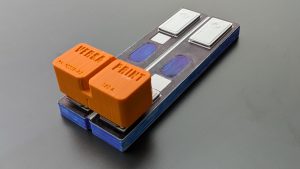
Who is behind Versaprint?
Versaprint brings together a multinational consortium of 10 partners from five European countries across the battery value chain and is coded in the Committee’s Atonagiet Energy alternative. These include Leitat, Fev Europe, Centro Ricerche Fiat, Sonaca, Efesto, Avesta, Lomartov, Rwth Aachen University and Opmobility. From material development and additive manufacturing to eco-design and lifecycle assessment, each partner plays a key role in transforming the concept of modular batteries into a real-world solution ready for industrial adoption.
This article will also be featured in the 24th edition of Quarterly Publishing.
Source link

